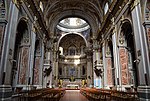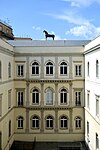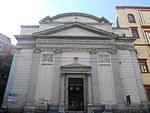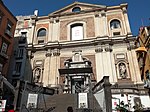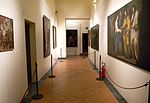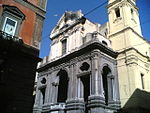San Giovanni a Carbonara
1410 establishments in Europe14th-century Roman Catholic church buildings in Italy15th-century establishments in Italy18th-century Roman Catholic church buildings in ItalyAugustinian churches in Italy ... and 4 more
Burial sites of the Capetian House of AnjouChurches in NaplesGothic architecture in NaplesReligious organizations established in the 15th century

San Giovanni a Carbonara is a Gothic church in Naples, Southern Italy. It is located at the northern end of via Carbonara, just outside what used to be the eastern wall of the old city. The name carbonara (meaning "coal-carrier") was given to this site allocated for the collection and burning of refuse outside the city walls in the Middle Ages.
Excerpt from the Wikipedia article San Giovanni a Carbonara (License: CC BY-SA 3.0, Authors, Images).San Giovanni a Carbonara
Via Gerolamo Seripando, Naples San Lorenzo
Geographical coordinates (GPS) Address Nearby Places Show on map
Geographical coordinates (GPS)
| Latitude | Longitude |
|---|---|
| N 40.856013 ° | E 14.260372 ° |
Address
Chiesa di Santa Monica
Via Gerolamo Seripando
80139 Naples, San Lorenzo
Campania, Italy
Open on Google Maps
